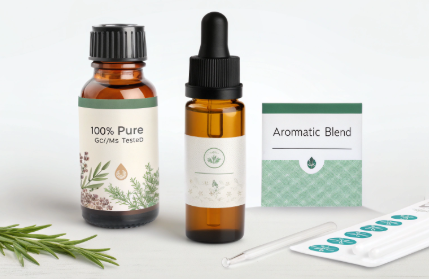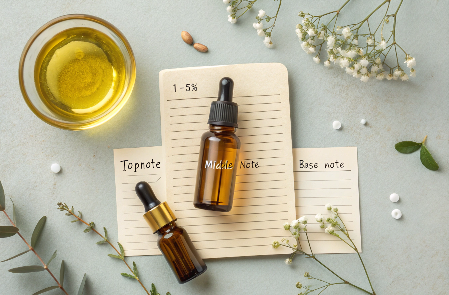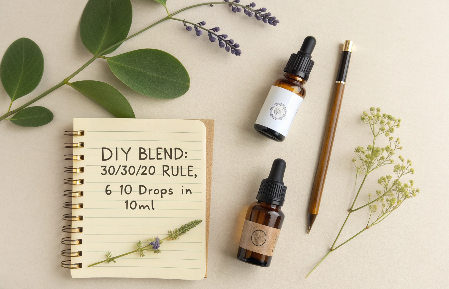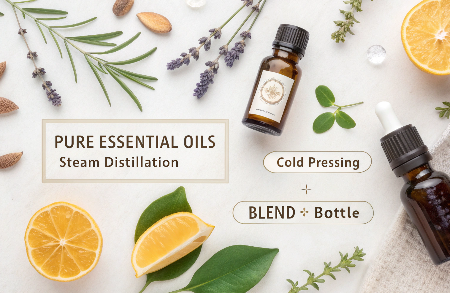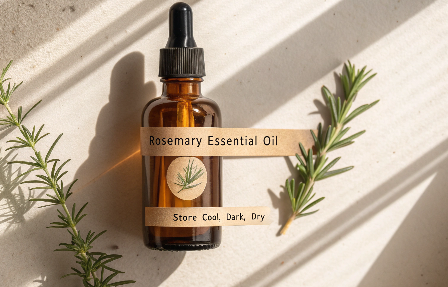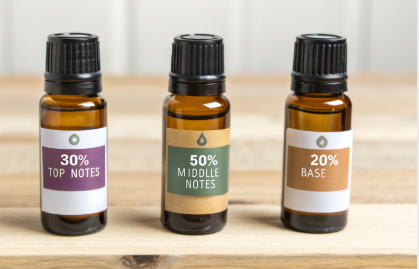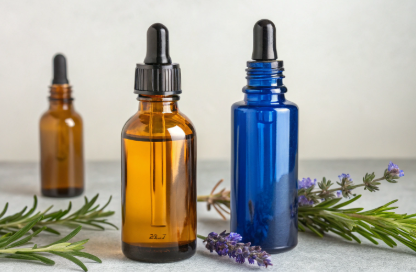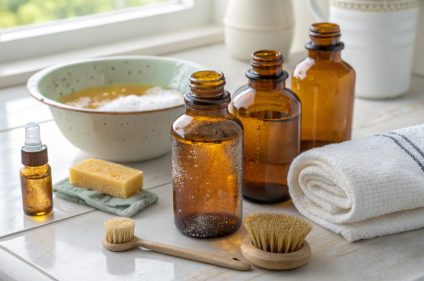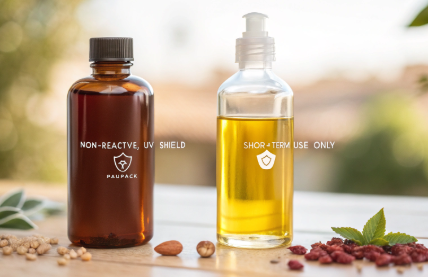Creating aromatherapy oils is a blend of art and science—selecting the right essential oils, balancing their notes, and pairing them with a suitable carrier. Whether for stress relief, better sleep, or an energy boost, the right blend can transform both mood and skin.
To make aromatherapy oils, mix essential oils with a carrier oil following a dilution ratio (typically 1–5%). Use the 30/50/20 rule to balance scent: 30% top notes, 50% middle notes, 20% base notes.
Let’s explore how to build blends that smell amazing, feel luxurious, and deliver real therapeutic value.
How to make your own aromatherapy oil?
It’s easier than you think—with the right ingredients and measurements.
To make your own aromatherapy oil, choose 2–3 essential oils, dilute them into a carrier oil like jojoba or almond, and store the blend in a dark glass bottle. Shake gently before use.
Dive Deeper: DIY Aromatherapy Blend Recipe
You’ll need:
-
10ml carrier oil (jojoba, fractionated coconut, sweet almond)
-
6–10 drops of essential oil blend (1–5% dilution)
-
Amber or cobalt dropper bottle
Step-by-step:
-
Choose oils by therapeutic goal (e.g., lavender + bergamot for calm).
-
Use the 30/50/20 rule for balance (see next section).
-
Blend oils first, then add to carrier.
-
Shake gently and label (name, ingredients, date).
At PauPack, we supply ready-to-fill oil bottles with pre-calibrated dropper caps, perfect for beginner aromatherapists and boutique brands.
What is the 30 50 20 rule for essential oils?
Fragrance harmony starts with structure.
The 30/50/20 rule helps balance an essential oil blend: 30% top notes, 50% middle notes, and 20% base notes. This creates a scent that opens well, lingers, and grounds.
Dive Deeper: Understanding Each Note
| Note Type | Characteristics | Common Oils |
|---|---|---|
| Top (30%) | Light, sharp, evaporate fast | Lemon, peppermint, eucalyptus |
| Middle (50%) | Heart of the blend | Lavender, geranium, rosemary |
| Base (20%) | Heavy, grounding, long-lasting | Patchouli, cedarwood, sandalwood |
Example (10-drop blend):
-
3 drops orange (top)
-
5 drops lavender (middle)
-
2 drops vetiver (base)
Add this blend to 10ml of carrier oil for a 5% dilution—ideal for pulse-point rollers or massage oils.
At PauPack, we help clients design blend templates and create pre-filled 10ml roll-ons with balanced fragrance profiles.
How are aromatherapy oils made?
Some are blended, some are extracted—it depends on the type.
Aromatherapy oils are made by either extracting essential oils from plants or blending those oils with carriers to create ready-to-use products.
Dive Deeper: Two Categories
1. Essential Oils (Pure)
-
Extracted from plants (flowers, leaves, peels)
-
Methods: steam distillation, cold pressing
2. Aromatherapy Blends
-
Mixed with a carrier (e.g., jojoba)
-
Used directly on skin, in roll-ons, or massage oil
At PauPack, we manufacture and package custom aromatherapy blends for beauty, spa, and wellness clients—offering both bulk oil solutions and retail-ready formats.
How do I extract essential oils?
It’s complex—but possible at a small scale.
Essential oils are extracted from plants using steam distillation, cold pressing, or solvent extraction, depending on the botanical.
Dive Deeper: Common Extraction Methods
| Method | Ideal For | How It Works |
|---|---|---|
| Steam Distillation | Herbs, flowers | Steam pulls volatile oils from plant matter |
| Cold Pressing | Citrus peels | Pressing releases oil without heat |
| Solvent Extraction | Delicate florals | Uses alcohols or hexane (not DIY-safe) |
DIY extraction is possible using a homemade still, but commercial-grade oils are more consistent, safer, and cost-effective for most users.
At PauPack, we source ISO-certified essential oils from trusted global suppliers and offer private-label services for custom aromatherapy lines.
Conclusion
Making aromatherapy oils is simple with the right essential oils, carrier, and balance. Use the 30/50/20 rule, stick to safe dilutions, and store in dark glass. At PauPack, we help you craft and scale your blends—from custom packaging to full white-label production.




